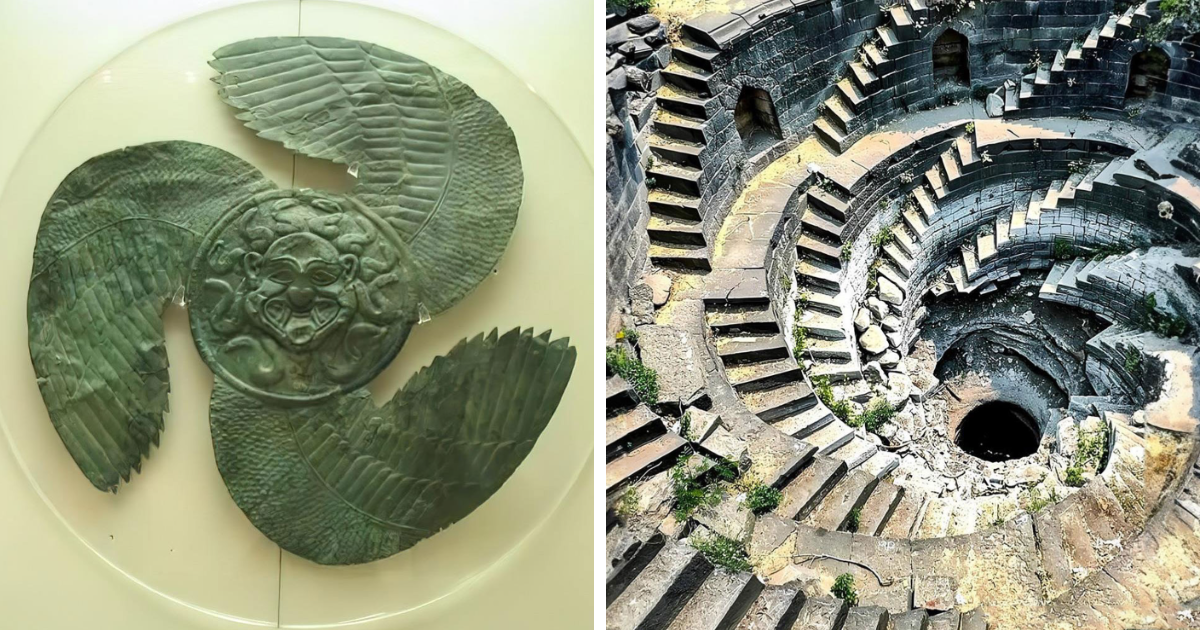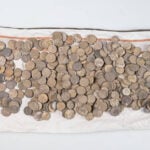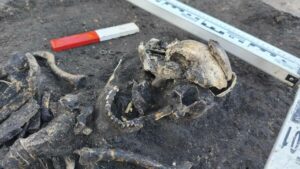ADVERTISEMENT
Have you checked out the incredible ancient stonework at Ollantaytambo in Peru? It’s seriously mind-blowing! The Inca used some fascinating tools and techniques to whip up those impressive structures. They didn’t have power tools; instead, they relied on basic hand tools, leverage, and their own ingenuity to shape and fit massive stones together without mortar. This engineering marvel showcases their skills and knowledge of stone cutting and construction, which still baffles experts today. It’s a must-see if you’re into history or just love cool architecture. trust me, it will leave you in awe!
The Ancasmarca ruins, hidden among Peru’s Sacred Valley slopes, are a testament to Inca ingenuity and logistical prowess. Picture hundreds of circular stone storage buildings, known as qullqas, meticulously designed to preserve vital crops like maize and potatoes. Nestled at a strategic high-altitude location, these structures harnessed natural temperature control, safeguarding food supplies for the vast empire. Ancasmarca wasn’t just a storage site; it was a bustling hub integral to the empire’s trade routes, ensuring stability and security. This marvel of ancient infrastructure challenges our understanding of the Inca’s mastery over their environment.
ADVERTISEMENT
ADVERTISEMENT
Welcome to Coober Pedy, the opal capital of the world, where over 70% of Earth’s opals are unearthed. Forget traditional living; residents chill underground, carving out homes, shops, and even churches to escape the scorching heat—40°C (104°F) in summer! This bizarre town, born from the first opal discovery in 1915, boasts a landscape filled with mine shafts and rock piles, a lasting testimony to its gritty mining roots. While it thrives in the opal industry, the real charm lies underground, where curious tourists are drawn into a subterranean utopia. Coober Pedy is not just a town; it’s an experience that defies the ordinary.
Imagine discovering a 3,000-year-old dagger still boasting a wooden handle, its craftsmanship intact after millennia! Unearthed from the Huldremose bog in Denmark in 2014, this remarkable weapon dates back to 1000–800 BC. The bog’s unique environment—waterlogged, acidic, and low in oxygen—prevented decay, making this discovery incredibly rare. The dagger not only showcases the extraordinary skills of ancient artisans but also provides valuable insights into their techniques and preservation methods. This find is a stunning glimpse into the past, allowing us to appreciate the artistry of the Late Bronze Age like never before.
ADVERTISEMENT
Imagine stumbling upon over 300 elongated skulls in the Peruvian desert! That’s exactly what archaeologist Julio Tello did back in 1928 when he uncovered the infamous Paracas skulls, dating back nearly 3,000 years. These massive skulls have stirred up loads of questions about ancient cultures and their practices. What did these strange shapes signify, and could they hold clues to untold histories? The discovery in Pisco province is still a hot topic among researchers, igniting fascinating debates and sparking curiosity in both scholars and casual history lovers. The mysteries of the Paracas skulls linger on!
Have you heard about the Longyou Grottoes? These incredible cave carvings near Shiyan Beicun village in China are a jaw-dropping testament to ancient engineering. Spanning around 30,000 square meters, this vast complex features over 24 caves crafted into sandstone. What’s truly mind-boggling is the skill and effort that went into creating this underground marvel—nobody knows exactly how or why it was built. Imagine the secrets these caves could reveal about the civilization that constructed them! It’s not just a sight to behold but a riddle waiting to be solved about our history and the people behind it.
ADVERTISEMENT
ADVERTISEMENT
Imagine a colossal, flat-topped mountain rising like a fortress from the earth—this is Mount Roraima, a breathtaking natural wonder in Venezuela. Standing at nearly 3,000 meters above sea level, it boasts striking, sharp edges that look almost man-made. For over 500 years, its origins have baffled scientists, and it continues to intrigue with its unique morphology. Stretching over 30 square kilometers, the summit is adorned with hidden waterfalls and steep cliffs, offering a mystical island in the sky vibe. Home to countless undocumented species of plants and animals, this enigmatic mountain invites exploration and discovery, keeping its secrets close.
Rathcroghan, a significant archaeological treasure in County Roscommon, Ireland, encapsulates 5,500 years of human history across more than 240 sites. Central to this heritage is the 5,000-year-old Rathcroghan Mound, a notable ceremonial site, alongside the enigmatic Oweynagat, or Cave of the Cats, steeped in Irish folklore. The Rathcroghan Complex reveals insights into ancient spiritual practices and daily life through its ringforts, burial sites, and ceremonial monuments. Visitors can engage with this rich history through guided tours and the Rathcroghan Visitor Centre, which offers compelling exhibits that delve into the mythology and significance of this extraordinary landscape.
Auto Amazon Links: No products found.





















